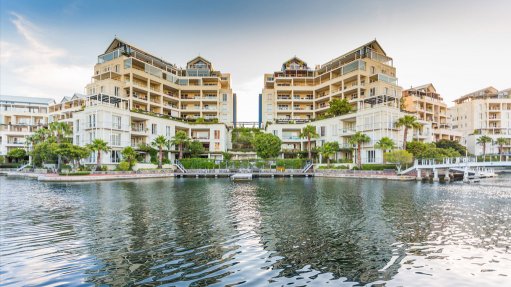
JSE-listed Growthpoint has, amid “hugely challenging economic and operating conditions”, recorded a dip in headline earnings a share to 59.72c for the six months ended December 31.
This was 11.49c lower than the comparative period of 2014 and significantly lower than the 149.42c apiece reported for the six months ended June 2015.
Despite the lower headline earnings, it achieved a 28.7% growth in gross revenue to R4.68-billion, while its distributable income grew 24.3% to R2.4-billion.
Speaking at a media briefing on the company’s results on Wednesday, CEO Norbert Sasse pointed out that Growthpoint’s South African property portfolio, which contributed 76.7% to its distributable income, was fairly robust, but admitted that it was not performing as it should be.
He said the country’s macroeconomic situation would also weigh on future results, stating that gross domestic product growth of less than 1% was not “doing anything for the markets”.
Further, Sasse pointed out that the addition of new shopping centres across the country was leading to an oversaturation in the market and a dilution in consumer expenditure.
Nevertheless, while the local market was expected to remain negative, the V&A Waterfront, in Cape Town, was bolstering the local portfolio, as it was benefiting from strong retail sales growth and tourism spend driven by the weak rand.
Distributions from Growthpoint’s 50% stake in the V&A Waterfront contributed 8.1% to its distributable income. “It is doing particularly well and we are constantly optimising this asset,” Sasse said.
Net property income grew 12.2% and overall property vacancies improved, reducing by half to a low 1.3%. Growthpoint’s retail sales delivered growth of 13% year-on-year and its retail trading densities also saw strong growth of 11% for the period. Retail space at the V&A Waterfront was also fully let.
Meanwhile, Sasse pointed out that the company normally expected its arrears to spike in December, but that, for the interim period, it had remained unchanged. This, he noted, spoke to the health of Growthpoint’s tenant base and indicated its proactive approach to its tenancy.
On the matter of clothing retailer group Edcon, which was struggling amid lower sales volumes and which planned to close some of its stories, Sasse said the financial impact on Growthpoint was nominal.
Sasse noted that, in certain instances, the group had asked landlords for payment reprieve. “As an industry, the group still remains relevant and with our single largest exposure being to the group in terms of square meters of space let, it is in both our interests that we work together.”
Meanwhile, the local portfolio’s occupancy levels improved with vacancies decreasing from 6.4% a year earlier to 4.9% in the period under review. Keeping costs well under control, its cost-to-income ratio also improved over the six months from 27.8% to 26.5%.
Growthpoint improved its lease renewal success rate to 69%. It achieved positive renewal rental growth rates of 1.6% overall.
GROWTHPOINT AUSTRALIA
Australian market dynamics remained positive relative to South Africa, with a decreasing interest rate environment, low unemployment, strong property fundamentals and positive gearing.
GOZ, Growthpoint’s Australian investment, delivered a 16.7% total return for the year December 31. GOZ contributed a strong 14.8% to Growthpoint’s total distributable income.
During the period, GOZ acquired properties valued at R1.3-billion, invested R335-million in development and capital spend and committed to portfolio growth of R742-million.
“In addition to increased returns from GOZ, we got more than we budgeted for from this investment because of the rand weakening against the Australian doller. The withholding tax on the GOZ distribution was also slightly lower than expected,” Sasse said.